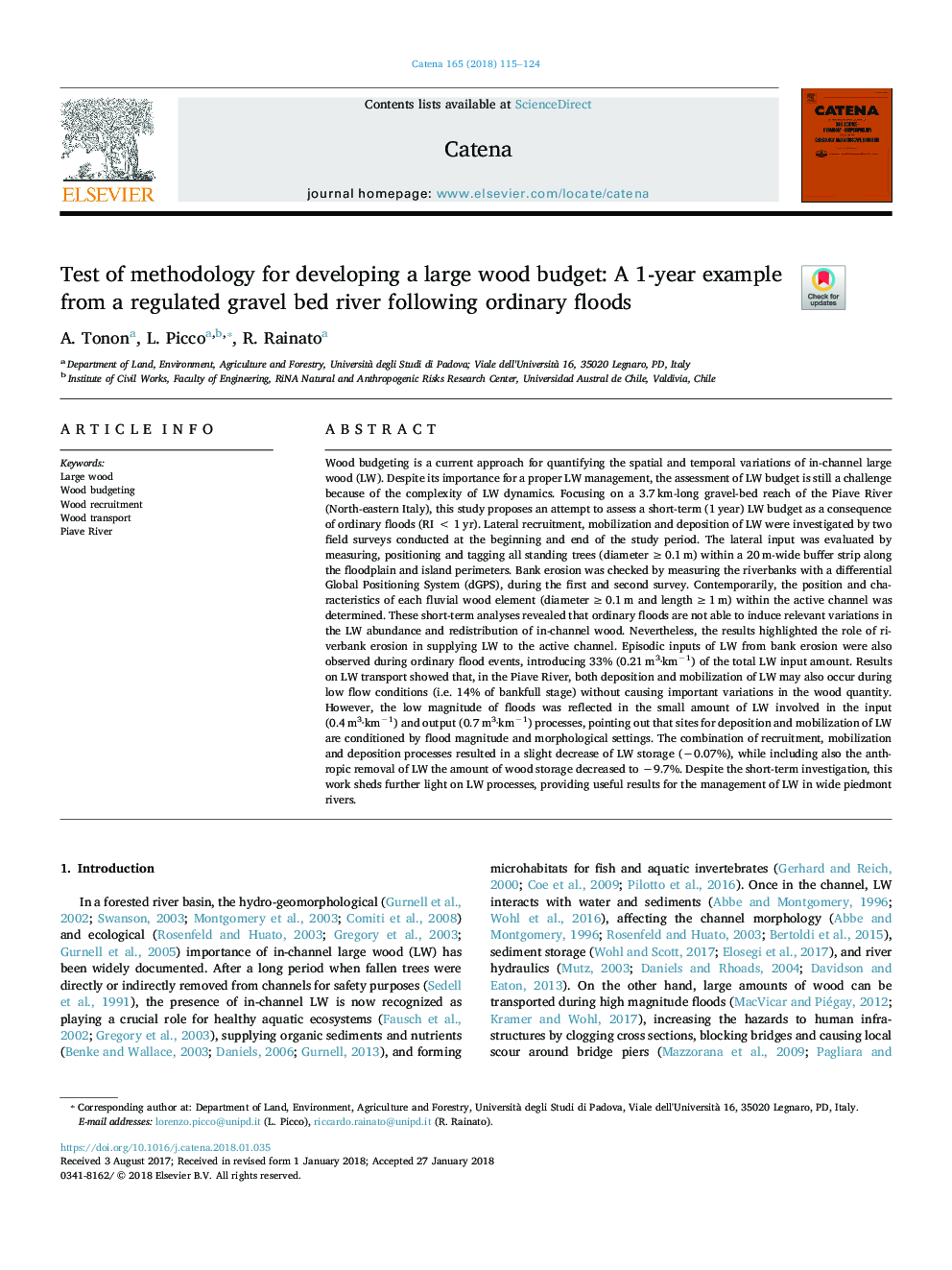| Article ID | Journal | Published Year | Pages | File Type |
|---|---|---|---|---|
| 8893575 | CATENA | 2018 | 10 Pages |
Abstract
Wood budgeting is a current approach for quantifying the spatial and temporal variations of in-channel large wood (LW). Despite its importance for a proper LW management, the assessment of LW budget is still a challenge because of the complexity of LW dynamics. Focusing on a 3.7â¯km-long gravel-bed reach of the Piave River (North-eastern Italy), this study proposes an attempt to assess a short-term (1â¯year) LW budget as a consequence of ordinary floods (RIâ¯<â¯1â¯yr). Lateral recruitment, mobilization and deposition of LW were investigated by two field surveys conducted at the beginning and end of the study period. The lateral input was evaluated by measuring, positioning and tagging all standing trees (diameterâ¯â¥â¯0.1â¯m) within a 20â¯m-wide buffer strip along the floodplain and island perimeters. Bank erosion was checked by measuring the riverbanks with a differential Global Positioning System (dGPS), during the first and second survey. Contemporarily, the position and characteristics of each fluvial wood element (diameterâ¯â¥â¯0.1â¯m and lengthâ¯â¥â¯1â¯m) within the active channel was determined. These short-term analyses revealed that ordinary floods are not able to induce relevant variations in the LW abundance and redistribution of in-channel wood. Nevertheless, the results highlighted the role of riverbank erosion in supplying LW to the active channel. Episodic inputs of LW from bank erosion were also observed during ordinary flood events, introducing 33% (0.21â¯m3·kmâ1) of the total LW input amount. Results on LW transport showed that, in the Piave River, both deposition and mobilization of LW may also occur during low flow conditions (i.e. 14% of bankfull stage) without causing important variations in the wood quantity. However, the low magnitude of floods was reflected in the small amount of LW involved in the input (0.4â¯m3·kmâ1) and output (0.7â¯m3·kmâ1) processes, pointing out that sites for deposition and mobilization of LW are conditioned by flood magnitude and morphological settings. The combination of recruitment, mobilization and deposition processes resulted in a slight decrease of LW storage (â0.07%), while including also the anthropic removal of LW the amount of wood storage decreased to â9.7%. Despite the short-term investigation, this work sheds further light on LW processes, providing useful results for the management of LW in wide piedmont rivers.
Related Topics
Physical Sciences and Engineering
Earth and Planetary Sciences
Earth-Surface Processes
Authors
A. Tonon, L. Picco, R. Rainato,
